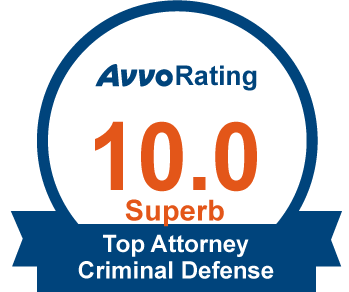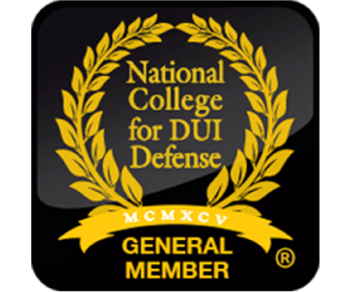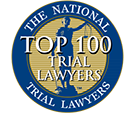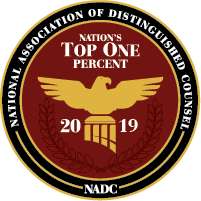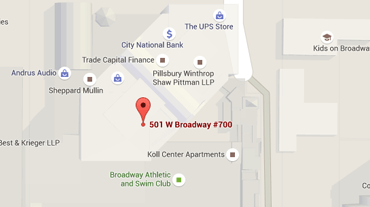Gang enhancement under California Penal Code 186.22 can significantly increase the punishment for a felony. Your sentence could increase by ten or more years and be served one right after the other, instead of a few years.
The police departments and the Sheriff of San Diego, in their Gang Unit and Narcotic and Gang Division, respectively, spend significant resources investigating and prosecuting gang-related crimes. These are challenging cases since intelligence-based approaches and task forces guide prosecutors. To secure your future, you need a local defense attorney with a proven track record of handling gang prosecutions.
At the Law Offices of Anna R. Yum, our lawyers are ready to defend your rights, explain your options, and pursue the most effective means to secure your future.
Free Consultation (619) 233-4433
An Overview of Gang Enhancement
California Penal Code 186.22 prosecutes gang-related offenses, in accordance with the Street Terrorism Enforcement and Prevention Act (STEP Act), which was enacted in 1988 to target organized criminal street gangs specifically. The law provides the way prosecutors may bring charges against people who join gangs or commit crimes on behalf of gangs.
Two subsections of Penal Code 186.22 matter most: subsection (a), which creates a standalone crime, and subsection (b), which enhances sentences for other felonies.
PC 186.22(a) establishes a crime of active involvement in a criminal street gang. It is an independent crime classified as a wobbler, that is, it can be prosecuted as a misdemeanor or a felony based on the circumstances surrounding the case.
The sentencing enhancement is defined in Penal Code 186.22(b). It does not make a new crime, but will extend a felony sentence should prosecutors demonstrate that the crime was committed on behalf of, at the directive of, or in connection with a gang.
PC 186.22(a) – The Substantive Crime
Section (a) criminalizes active participation in a gang. There are three things that prosecutors need to demonstrate:
- You were an active member of the gang, not only by name or passive membership
- You were aware that the members of the gang were involved in a criminal activity pattern
- You knowingly helped, aided, or encouraged a felony committed by members of a gang
Penal Code 186.22(a) is a wobbler; the prosecutor may charge it as either a misdemeanor (up to 1 year in county jail) or a felony (possible terms of 16 months, 2 years, or 3 years).
PC 186.22(b) – The Sentencing Enhancement
Section (b) is often more severe because it adds additional prison time to an existing felony. To use it, the prosecution should demonstrate:
- You committed a felony in the interest of, at the direction of, or in connection with a gang
- You had the particular intent to encourage, advance, or support criminal activity by gang members
For PC 186.22(b), active participation is not necessary. Even a person loosely affiliated with a group can be subject to the enhancement, in case prosecutors claim that the crime benefited the gang.
Where PC 186.22(b) applies, the prosecution seeks an additional prison term that is served consecutively to the underlying sentence. Typical additional terms under subsection (b) are measured in whole years (for example, commonly 2, 3, or 4 years depending on the subsection and underlying offense), and other statutes may add longer consecutive terms for grave underlying crimes.
The Effect of AB 333
Assembly Bill 333 (STEP Forward Act), effective January 1, 2022, raised the bar for proving gang enhancements. Prosecutors now have more rigid rules to follow. They must prove that past crimes benefited the gang beyond just reputation. Crimes such as looting or minor vandalism no longer count. Prosecutors cannot use the same crime a person is currently charged with as proof of gang activity; this is called ‘no bootstrapping’.
Prior to AB 333, prosecutors frequently claimed that practically any crime improved the reputation, respect, or dominance of a gang over an area. That sufficed to demonstrate a gang enhancement.
No Bootstrapping the Current Charge
Bootstrapping is when prosecutors use the current charge as a predicate offense to show a ‘pattern of criminal gang activity.’ AB 333 bans this practice, requiring them to prove a gang’s history with independent, prior crimes.”
The Importance of AB 333
AB 333 gives you stronger ways to fight gang enhancement. Your defense attorney can argue that:
- The supposed benefits to the gang were too vague
- Past crimes do not meet the stricter requirements established under AB 333
- Prosecutors lack enough independent evidence
These changes make it harder for the state to prove enhancements and give your defense attorney more tools to challenge them in court.
Definition of a Criminal Street Gang
The basis of any gang enhancement charge is the prosecution proving the existence of a criminal street gang as defined by law. Under Penal Code 186.22(f), a criminal street gang is defined as a group of three or more people that operates as an ongoing, organized association and meets specific legal criteria. A criminal street gang should have the following characteristics:
- The group should possess a common name, common identifying sign, or symbol
- The group should have committed one or more of the crimes listed in the statute, and that crime should be one of the primary activities that the group is doing. This includes crimes such as assault with a deadly weapon, robbery, drug trafficking, and shooting at an inhabited dwelling
- The members of the group should have collectively participated in a pattern of criminal gang activity
How Prosecutors Prove a Gang’s Pattern of Crime and the Main Activities
To secure a gang enhancement conviction, the prosecution must establish the pattern of criminal activity by showing two or more of the listed crimes. These offenses should have been perpetrated on different occasions or by two or more individuals in the group and should have been perpetrated within three years of each other.
This evidence usually consists of court documents of previous convictions. The prosecution will also use experts to show that the crimes were committed as a furtherance of gang activity.
One defense mechanism that would be critical under AB 333 is to question the adequacy of this evidence. A prosecutor can no longer rely on old and irrelevant crimes to demonstrate a “pattern”.
As an example, a defense lawyer can claim that the purported prior criminal activity did not benefit the gang as a whole under the law. This can undermine the prosecution’s claim that the crime was committed to defend territory, threaten an opponent, or coordinate with other gang members.
The prosecution must also demonstrate that you committed the crime with a particular intent to promote, further, or encourage any criminal activity by gang members. This requirement places a heavy burden on prosecutors, who must prove that the defendant had the specific intent to promote or further the gang’s criminal activities.
It is a thin but essential distinction between just committing a crime and committing a crime to benefit a gang with other gang members. The prosecution does not have to prove that you are an active member of the gang to be subjected to this enhancement, but you must possess this particular intent.
Your lawyer could demonstrate that your motive was personal, for example, a drug addict robbing to finance an addiction, or an individual robbing out of personal anger. Showing this is one of the keys to a strong defense against this aspect.
Burden of Proof and Procedural Tools
The prosecution has to demonstrate all the elements of the gang enhancement, including the existence of the gang, as well as the particular intent of the defendant, beyond any reasonable doubt, which is the highest burden in American law.
One of the most effective procedural instruments the defense can use is the motion to sever the gang enhancement of the underlying offense. Separating the trial of the gang enhancement and the trial of the primary crime is called bifurcation.
Your attorney may ask the jury first to decide whether you are guilty or not guilty of the underlying felony without listening to any of the potentially catalyzing evidence of you being a gang member. If you are found guilty by the jury, a second, independent trial on the gang enhancement claim would then follow.
This is such a vital defense weapon because gang evidence, such as photographs of tattoos, clothing, or previous offenses of associates, is often very prejudicial and can unfairly prejudice a jury against you.
By bifurcation of the trial, the jury will only give their verdict on the main charge, which will be guided by the facts of the crime you committed and not by the evidence of the gang. Although AB 333 (effective January 1, 2022) added a statutory right to bifurcate gang enhancements (Penal Code 1109), the California Supreme Court held in People v. Burgos (June 3, 2024) that PC 1109’s bifurcation requirement is not retroactive in many cases.
Common Evidence That Prosecutors Use
Prosecutors present their case of gang enhancement with a range of evidence. In many instances, they use circumstantial evidence to prove the intent and relation of the defendant to the gang. This evidence includes the following:
Witness Testimony
Prosecutors often rely on ‘gang experts’, usually law enforcement officers, who testify about culture, symbols, and behavior such as the hand signs or graffiti of the gang members. However, their testimony is usually subjective and can be contested by your defense attorney, who might say that the officer’s opinions have no proper factual basis and that the jury can easily interpret the facts on its own without expert opinion.
Another common source of information used by prosecutors is jailhouse informants or cooperating witnesses, who give information in exchange for special treatment or a lighter sentence in their cases.
These witnesses are not reliable because they have a strong motivation to lie. Through cross-examination, a defense attorney can go on the offensive against the credibility of such witnesses, exposing any arrangements they had with the prosecution, their criminal background, or any contradictions in their testimony.
Physical Indicators
Physical evidence is a method that prosecutors frequently use to connect a person to a gang. The most common items shown in court include tattoos, clothing styles, and symbols.
As an example, when a defendant is tattooed with some numbers or letters, the prosecution can demonstrate that it signifies gang membership. Wearing colors linked to gangs, such as red or blue, is often argued as proof of affiliation.
The issue with this kind of evidence is that it may be deceptive. Tattoos are highly personal and may be a cultural tradition, family relationship, or personal beliefs that have no connection with gangs.
Dressing can be based on fashion, supply, or even sports teams instead of criminal loyalty. A skilled defense lawyer can emphasize these other reasons and demonstrate that physical evidence alone is not strong evidence that someone is a gang member.
Digital Evidence
In the modern digital world, prosecutors use technology to construct their cases. Posts on social media, photographs, text messages, and GPS information are frequently used to claim that a defendant was a member of a gang or engaged in gang activity.
As an example, a Facebook post that depicts a group picture may be presented as an indication of affiliation with established gang members. However, the prosecution must have concrete evidence. Because a text message that reads, ‘we handled it,’ can be misinterpreted as evidence of gang activity when it may be entirely innocent.
Digital evidence, however, is highly flawed. Context is everything. The defendant may have a photograph that is several years old, and may be with childhood friends who have since joined a gang.
Social media posts or texts can be easily taken out of context or misinterpreted. A defense lawyer can dispute the accuracy of this kind of evidence by asking how it was gathered, whether it was verified, and whether the entire situation is narrated otherwise. Digital forensics experts can assist in rebuilding conversations, timelines, and metadata, providing jurors with a better and more accurate image.
Penalties and Consequences
The most severe consequence of a gang enhancement is the significant additional prison time it can impose. These enhancements are served consecutively to the underlying sentence. Even in cases where the underlying felony is relatively minor, for example, a conviction for vandalism or theft, the enhancement may still require two, three, or four years in addition to that.
Additional consecutive terms depend on the particular enhancement statute and the underlying offense. For example, Penal Code 186.22(b) enhancements commonly add measured years (2–4 years) while other penalty statutes or special-circumstance allegations can add larger or different consecutive terms.
Because enhancements vary by offense and statutory subsection, you should cite the exact statutory provision for any concrete numeric example or consult a criminal-law specialist. Where the felony per se is already a life sentence, parole is never even thought of until the defendant has served fifteen years.
Gang enhancement also applies to those sentenced to serve probation time.. Even in cases where a court orders probation, a determination that the gang enhancement is true can still necessitate at least 180 days in jail.
Immigration Consequences
Also, the effects of a gang enhancement do not end with imprisonment. A conviction involving a gang can have collateral damage. A sentence with a gang enhancement can trigger severe immigration consequences. A non-citizen defendant may face removal from the country (deportation) depending on the underlying offense and classification under immigration law. Defendants with immigration concerns should consult an immigration attorney immediately. (Give immigration counsel link if desired.)
Housing and Employment Consequences
For citizens, the gang conviction label may result in significantly greater difficulty finding a place to live, employment, or professional licenses. It usually leads to more surveillance and monitoring by the police even after the sentence is completed.
Legal Defenses to California Gang Enhancements (PC 186.22).
When you are dealing with a gang enhancement charge in California, you are dealing with one of the most challenging aspects of the criminal justice system. However, California law provides you and your attorney several options to appeal these enhancements. The more defensive you are, the more likely you are to cut down or even prevent the extra punishment. The following are some of the defenses your attorney could employ:.
You Could Appeal the Felony
A gang enhancement can only be applied when the prosecution has first established that you have committed the underlying felony. The enhancement automatically disappears when the prosecution fails to prove beyond a reasonable doubt that the crime has been committed.
Your defense attorney could cross-examine witnesses, identify, or demonstrate inconsistencies in the witness’s narrative to counterattack the evidence. Raising reasonable doubt can be sufficient to avoid conviction even when prosecutors possess some proof, and without the felony, there can be no gang enhancement.
You Were Not An Active Gang Member
It is not enough to be casually associated with people in gangs as required by California law. The prosecutors must demonstrate that you actively engaged and willingly encouraged or facilitated criminal activities.
Just being friends with, or living close to, or just being around people who are accused of gang activity is not sufficient. Your attorney can point out the distinction between passive association and active participation, and cast doubt as to whether you were involved.
Your Action was not Gang-Related
Although prosecutors may argue that you were a member of a gang, they still have to demonstrate that your alleged offense was committed to enrich the gang. The enhancement does not apply if your motive was personal, such as stealing to cover a bill, feeding an addiction, or in response to anger. Your lawyer can show that you did this out of personal motives, not to advance the interests of a gang. This difference can be the difference between a normal sentence and years of extra prison time.
False Accusations and Inadequate Evidence
Many state cases are based on so-called gang experts, typically police officers, who testify on gang culture, tattoos, clothing, and even hand signs. However, this kind of evidence is usually subjective and subject to interpretation.
Your attorney may question the reliability of the facts on which the expert opinion was made or whether it was merely stereotypical. Likewise, there are innocent reasons behind tattoos, colors, or posts on social media. By challenging this evidence, your lawyer will be able to stop the jury from making an unfair assumption that you are a gang member.
Filed a Motion to Separate the Gang Enhancement and the Core Charges
Gang evidence can be highly incendiary; tattoos, graffiti, or photographs can prejudice a jury. California law has now permitted your attorney to request bifurcation, or separation of the trial of the gang enhancement and the underlying crime. By doing so, the jury initially decides whether you committed the alleged felony without being influenced by gang evidence. Only at that point, when you are found guilty, does a separate trial determine the gang enhancement. This safeguards your right to trial by fairness.
You are not a Member of a Criminal Street Gang
To enforce an improvement, prosecutors need to demonstrate that the accused group is a legal criminal street gang. This implies it should be structured, continuous, and part of some listed crimes. The bar is even higher under AB 333: the prosecutors have to demonstrate that the past criminal activity of the gang provided the group with a concrete advantage, not merely an increase in publicity. The enhancement fails if the state cannot demonstrate that the group satisfies these legal requirements.
Find a Reliable Defense Attorney Near Me
Gang enhancement charges can carry serious consequences; however, a solid defense could make a critical difference in the outcome of your case. You want to hire a defense attorney who understands California gang laws and has defended defendants facing gang enhancements. This can help you protect your rights and your future. If you are facing gang enhancement in San Diego, contact the Law Offices of Anna R. Yum at 619-493-3461 to speak with our attorneys about your case during a free and confidential consultation.



